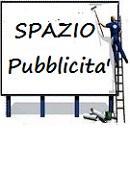
|
||||||||||||||||||||||||||||||||||||||||||||||||
|
||||||||||||||||||||||||||||||||||||||||||||||||
|
|
St Giovanni a Carbonara
One of the most beautiful churches of Naples, it contains many precious sculptures. Construction was started in 1343 and was completed at the beginning of the XV century for will of the king Ladislao di Durazzo. San Giovanni a Carbonara is a Gothic church in Naples, southern Italy. It is located at the northern end of via Carbonara, just outside what used to be the eastern wall of the old city. The name carbonara (meaning "coal-carrier") was given to this site allocated for the collection and burning of refuse outside the city walls in the Middle Ages.
Damaged from bombardments in 1943, it underwent restoration works for a long times in the XX century. It rises on top of a trachytic rock stairway with two ramps, a work of Ferdinando Sanfelice (1707). The very sober façade, presents a nice portal of gothic style, with the upper lunette frescoed by Leonardo da Besozzo. The interior, with one nave to which later some chapels were added, has a gothic plan with high wood trussed ceilings, presenting one opening to allow light to enter in the rectangular hall.
Behind the main altar there is the famous sepulchral monument of king Ladislao (1414), 18m high and held up by caryatids resembling the 4 virtues.
On top, in a niche under a pointed arch, there are statues of Ladislao e Giovanna on the throne, and next to them characters of Court and other Virtues.
The Chappels : Miroballo Chapel (Cappella Miroballo) - Dedicated to St John the Baptist, and decorated by Lombard artists including Malvito and Jacopo della Pila. Here, the tomb of Antonio Miroballo was completed by Lorenzo Vaccaro and was completed before the 15th century frescoes of San Nicola da Tolentino.
Caracciolo del Sole Chapel (Cappella Caracciolo del Sole) - Near the apse, entered by passing under the funereal monument to King Ladislao. This Renaissance style chpel has frescoes by Perinetto and Leonardo da Besozzo, and the tomb of Sergianni Caracciolo. Caracciolo di Vico Chapel (Cappella Caracciolo di Vico) - This chaple was also completed by Renaissance painters, and included work by sculptors such as Giovanni da Nola, Girolamo Santacroce, Giovanni Domenico D'Auria, Annibale Caccavello, and Girolamo D'Auria.
Somma Chapel (Cappella Somma) - To the left of the entrance, this chapel was erected in 1557-1566 by D'Auria and Caccavello.
Seripando Chapel (Capella del Corcifisso) - the latter houses a Crucifixion by Giorgio Vasari.
The church also contains a statue of the Madonna delle Grazie (1578) by Michelangelo Naccherino, and a sacristy whose decorative plan was formulated by Giorgio Vasari, with the help of Cristoforo Gherardi. With excerpts adapted from : Due sicilie net - in campania - wikipedia - Naples Main Attractions - Basilica Carmine Maggiore | Basilica St Chiara | Basilica St Francesco di Paola | Basilica St Paolo Maggiore | Basilica St Maria della Sanita' | Chiesa del Gesu' Nuovo | Chiesa St. Domenico Maggiore | San Gennaro Cathedral | San Gregorio Armeno | St Angelo al Nilo | St Giovanni a Carbonara | St Lorenzo Maggiore | St Maria Anime al Purgatorio | St. Maria Donnaregina Vecchia | St Maria Donnaregina Nuova | St Pietro a Majella | Museum Cappella Sansevero | Naples Galleria | Vulcano Vesuvio | Naples Underground | The Catacombs | The Islands - Sorrento Coast - Amalfi coast - The Hamlets in Campania - Museums - Archaeology Sites - The region - The provinces - Napoli - Caserta - Salerno - Avellino - Benevento
|

|
||||||||||||||||||||||||||||||||||||||||||||||
|
||||||||||||||||||||||||||||||||||||||||||||||||






